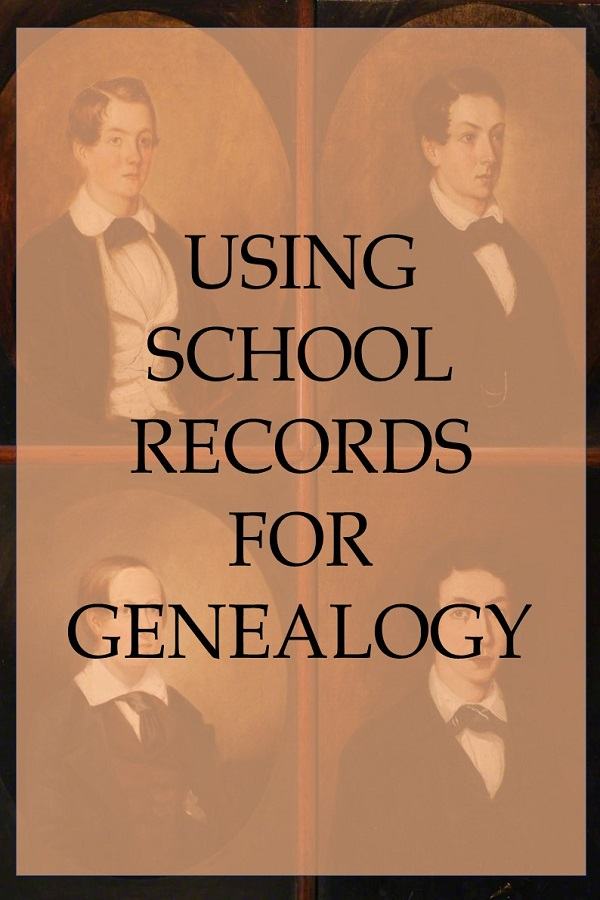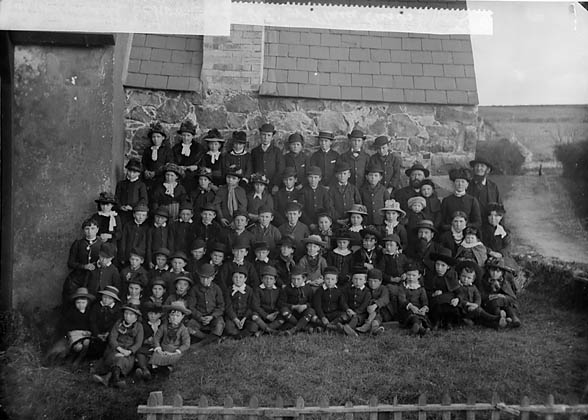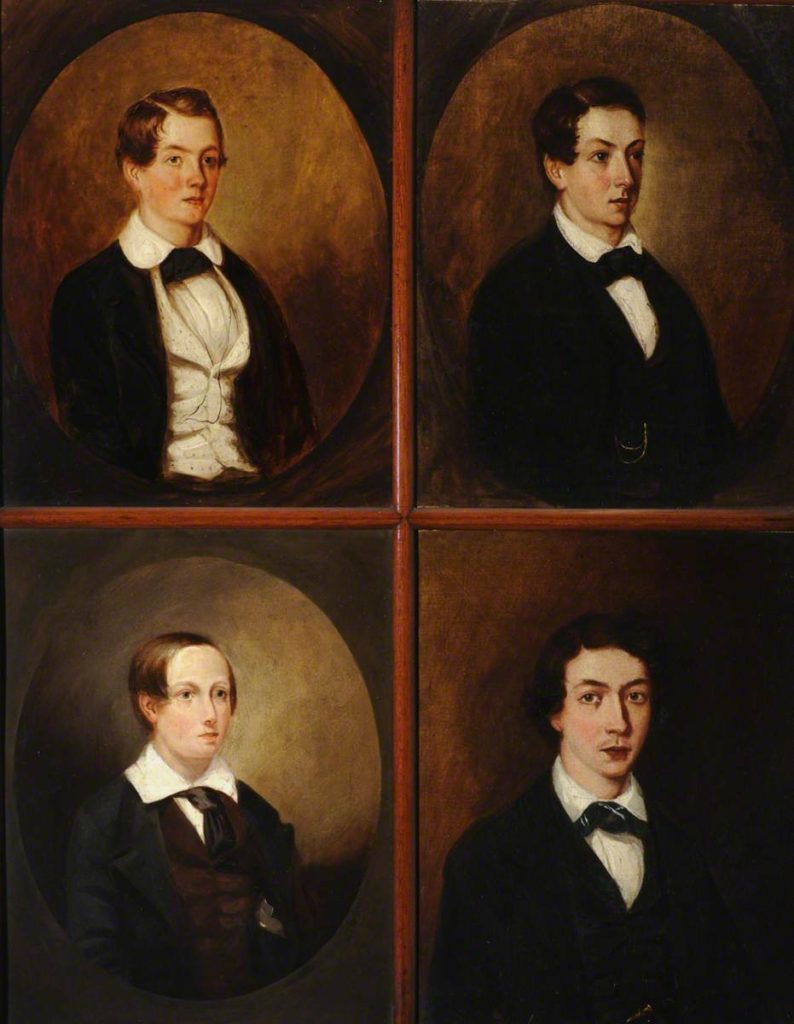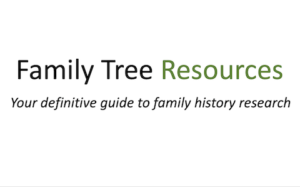
During the eighteenth century, schools were mainly charity schools, Sunday schools, Grammar schools and private schools.
The number of primary schools increased during the nineteenth century because of the work conducted by the British and Foreign School Society, which had been formed by a group of Quakers in 1808 as the Society for Promoting the Lancastarian System for the Education of the Poor, and the National Society for Promoting the Education of the Poor, formed by members of the Society for the Promotion of Christian Knowledge in 1811.
Government funds were made available for school building work after 1833.
The Education Act 1870 established School Boards to help manage schools. The members of this board were usually locally elected. It also stipulated that religious teaching in these schools was ‘non-denominational’.
Education was made compulsory for children up to the age of 10 in 1880, which was increased to 11 in the Elementary Education (School Attendance) Act 1893.
The school leaving age was raised to 13 in 1899, and then increased again to 14 in the Fisher Education Act 1918.
The school leaving age was raised again to 15 in 1944, this taking effect in 1947. It had been muted prior to the Second World War but the idea was shelved at that time due to the situation.
The Grammar School System was created in this Act, whereby all 11 year-olds had to sit the 11-plus examination, which determined whether they would go on to Grammar School or attend a Secondary Modern.
The school leaving age was raised to 16 in 1972.
Information Contained in School Records
Your ancestor’s date of birth is normally included in the school admission registers, which will help you to break through a brick wall if you are unable to find your ancestor in records such as the GRO index and census returns.
For more information about searching in the GRO Index and how to find census returns, please read my article, using the GRO Index for family history research and my guide to census returns in England and Wales.
It is always possible, however, that the date of birth entered in the record could have been incorrect because the parents may have wished for their child to be enrolled into a particular school and embellished the truth of his or her birth date.
It is also possible that a clerical error meant that the date of birth was incorrectly recorded in the record.
It is always prudent to check the child’s date of birth by utilizing other sources.
Parents names are also normally entered in the admission register, but the mother’s maiden name is not recorded. This is a good way to determine whether your ancestor was living with his or her parents at the time of their enrollment in the school.
If the child was not living with his parents at the time of their enrollment in the school, the name of a guardian may be entered instead, which could be a grandparent or even the child’s aunt or uncle or other relative. It is always possible, however, that the child’s guardian may not be a relative.
Your ancestor’s address is usually included in the record, which may help you to track down the family in a census return.
If the child had previously attended another school, the name of the school can also be entered in the register. If the child was born overseas, this name may help you to pinpoint exactly where your ancestor was born.
Admission registers may also help you to determine if your ancestor had any brothers and sisters that may also have attended the school, which can help you to determine if you have found the correct family.

Details are sometimes entered of when a child left the school, which can include the date of their departure along with the reasons for this. This information can help you to determine if a family left the area, which may provide an answer as to why you cannot find the family in town records.
Logs kept by the school could help you to discover what your ancestor’s life in the school was like as the logs can offer details of the occurrences in the classroom or school. Your ancestor could feature in the log if he or she was punished for misbehaving, which can tell you more about their personality. This can add more detail to your family tree rather than having birth, marriage and death dates.
School records may give more personal information about your ancestor, such as whether they were top of the class or reprimanded for not attending lessons. If your ancestor was absent because of ill health, this could also have been documented.
Details such as exam results may also be found in the records, this information sometimes including their position in the form or class.
School records mainly date from the Victorian times, when changes were made to the education system because of the Education Act 1870.
How do I Find Old School Records?

School registers and log books for schools in England and Wales during 1870-1914 can be searched at FindmyPast.
FindmyPast
FindmyPast is good for anyone, whether they are just starting their family history journey, or have already conducted some research.
It is especially good for people who wish to read newspaper articles.
Read my in-depth review to find out more about its features, advantages and disadvantages.
London School Admissions and Discharges 1840-1911 can be searched online at Ancestry. This record includes information relating the students attending 843 schools. Information contained in these records can vary from school to school, but can include:
- Admission date
- Name
- Parents’ names
- Parents’ occupation
- Address
- Birth date
- Age
Ancestry
Ancestry is great for anyone who does not have the time to, or is unable to, visit Record Offices or Libraries.
It is especially good if you wish to access records from the comfort of your home.
Read my in-depth review to find out more about its features, advantages, and disadvantages.
Some school records can also be found at the National Archives in Kew, which cover 1854-1984 for elementary schools and 1818-1946 for secondary schools. You can search either by the name of the school or by the name of the town.
The term elementary was replaced by primary in 1944. If the primary school was established prior to 1966, records can be found in series ED161, again at the National Archives.
Some school records can also be found in record offices. For more information about record offices, please read my article: what to expect when you visit a record office. School records found in record offices normally include:
- Managers’ minutes
- Log books
- Admission registers
- School building plans
School admission registers are closed for 95 years for primary schools and 90 years for secondary schools.
A book may have been written about the history of the school, which can give you more idea of what life at the school was like, and could feature your ancestor.
Building Grant Applications
Building Grant Applications covering 1833-1870 can be found in series ED103 at the National Archives.
Your Relatives May Have Kept School Reports
It is always possible that your relatives and ancestors may have kept records, certificates and other keepsakes from their or their ancestor’s school days. I know that my parents kept all my school reports and certificates, as well as some of my art projects.
It is well worth asking your parents or relatives whether anything was kept that relates to their, or their ancestor’s, time at school. You never know what you may discover!!
